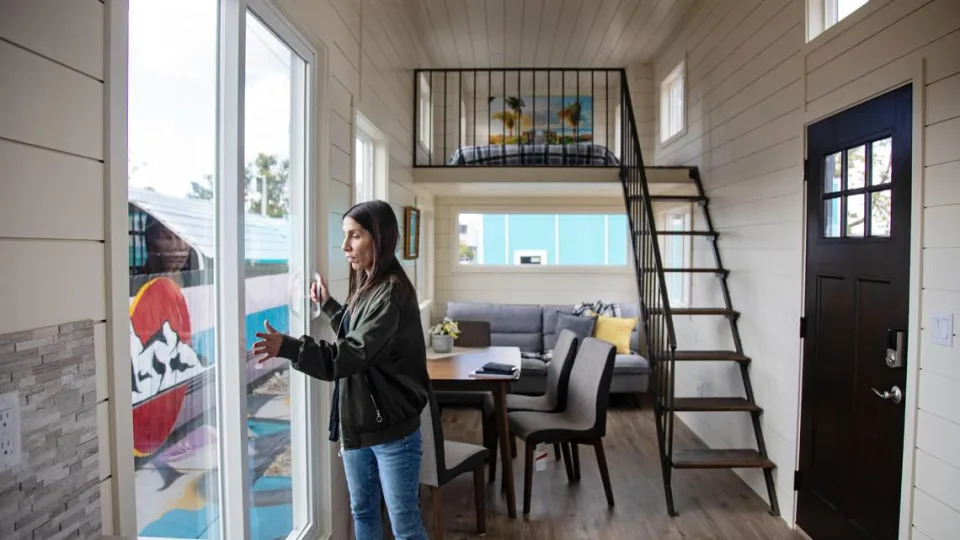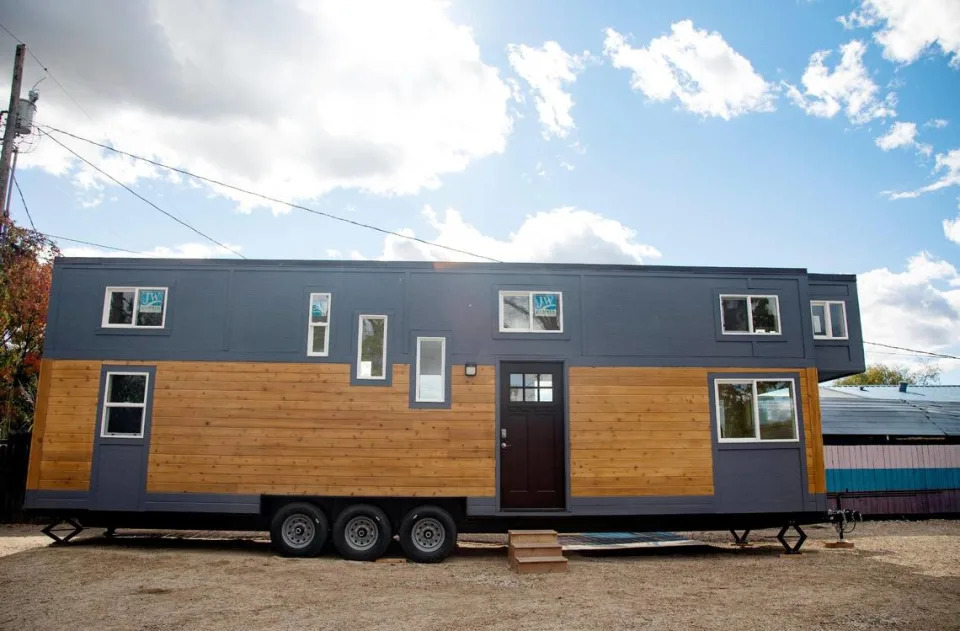Idaho Statesman
Tiny homes tucked into Boise neighborhoods? This pilot project will test the idea
Angela Palermo – April 17, 2023
The city of Boise is working on a tiny home pilot project to study its potential impact on housing affordability.
The program aims to assist selected residents in placing six movable tiny homes on land across various neighborhoods within city limits for a temporary period of time. City code currently does not allow for movable tiny homes.
The pilot project will allow approved applicants to be the first to test the concept.
“The idea was that we need more housing that’s affordable to folks on a Boise budget,” Kyle Patterson, director of innovation and performance at the city, told the Idaho Statesman by phone. “Meanwhile, things like tiny homes and small-footprint living are in high demand these days, but not something that’s allowed within city limits.”

About a year and a half ago, the city participated in an innovation program through Bloomberg Philanthropies and Harvard University where staff members were tasked with identifying new solutions for housing relief. The group of about 10 city employees took what they learned and interviewed dozens of Boise residents, from developers to homeowners to people experiencing homelessness, to try to understand the issue of housing affordability from their perspectives.
The city also held sessions where residents were invited to brainstorm creative solutions to address the rising cost of housing in the area. Hundreds of ideas were shared.
The plan was to test out some of the most promising proposals.
“There were a few ideas that rose to the top from that work,” Patterson said. “One of them was around tiny homes. The thought was, could we try this on a small scale for a few tiny homes, and then evaluate that pilot to see if it’s something we might consider allowing permanently throughout the city?”
Housing advocates see tiny homes as among a variety of housing types that could help address affordability.
In Boise State University’s 2022 survey on growth, when asked which type of building Idaho needs to meet the demand for more housing, 17.9% of respondents said new, alternative types of housing like tiny homes were needed. Seventy percent of those surveyed said they favor their local government changing zoning laws to allow them.
The survey was conducted Nov. 13-21, 2021, of 1,000 adults living in Idaho.
In Boise State’s 2023 survey, 68.8% of respondents said if they had to move out of their home for whatever reason, it would be very unlikely they’d be able to purchase or rent a similar home for the same amount.
What is a tiny home?
Tiny homes are small houses on wheels, and are usually 200-400 square feet. They’re much smaller than a typical single-family American home, which is around 2,500 square feet on average, but have most of the essential amenities such as a bed, kitchen and bathroom — albeit on a much smaller scale.
“The hope is that because these are very small homes, they might be more affordable,” Patterson said. “Through the pilot, we’re hoping to test whether that’s actually true.”
Many people who choose to live in tiny homes are single, according to Patterson. Some are retired, some live only with a dog and oftentimes they don’t need a lot of space.

Homeowners who are willing to place a tiny home in their backyard have to pay to install a gravel pad and to extend hookups to electricity, water and sewer services. Plus, there’s the cost of the tiny home itself. Tumbleweed Tiny House Co., one of the largest manufacturers of tiny homes in the U.S., sells the made-to-order homes for around $90,000.
Still, it’s considerably less than the median price of a newly built, single-family home in Ada County, which was $507,500 in March.
The city is working with LEAP Housing, a local nonprofit, to administer and manage the tiny home pilot program. Zeb Moers, director of development for LEAP Housing, told the Statesman by phone that the project has to get unanimous neighborhood approval from each homeowner who shares a property boundary with the tiny home applicants, at least for the pilot program.
That’s a requirement that could change if the pilot program is successful and the city decides to permanently change its zoning laws to allow them.
For now, it means that even if 10 neighbors say yes, but one says no, the application can’t go forward.
The city already had screened who it thought were the top candidates, but after finishing site plans and a few other processes, one neighbor voiced concerns about two tiny home projects planned nearby.
“We just had to move on to the next person on the application list,” Moers said. Right now, the city and LEAP Housing are working on filling all the slots.
The hope is to try out the tiny homes in a mix of contexts to see what works best. For example, Patterson said one site could have a community scenario with a few tiny homes in the same area, another could involve someone renting a tiny home from someone who already owns one on their property and a third scenario could include someone moving their tiny home onto another’s property.
But the city planners and organizers from LEAP Housing want to make sure the tiny homes for the pilot are generally spread out among a few different neighborhoods in Boise to see what works best.
The program is planned to last 12-18 months.
“The folks that we’re going to work with for the pilot, we’re going to make sure that they’re renting to folks for whom this won’t make them more unstable,” Patterson said. “I think there’s a lot of folks who are happy to have a place to stay for the next 12-18 months. You think of like a traveling medical worker or a child who just graduated from college but can’t afford the cost of living here.”
